2024-2025 Cardiff Goat Pro Carbon Splitboard, 162 cm
Available Sizes: 150, 154, 156, 158, 162, 166 cm
Stated Weight (162 cm): 3084 g / 6.79 lbs
Blister’s Measured Weight (162 cm): 3000 g / 6.61 lbs
Stated Nose-Waist-Tail Widths (162 cm): 30.0 / 26.3 / 29.0 cm
Blister’s Measured Nose-Waist-Tail Widths (162 cm): 30.0 / 26.5 / 28.8 cm
Blister’s Measured Tip Length (center of front inserts to end of tip) (162 cm): 56.1 cm
Blister’s Measured Tail Length (center of rear inserts to end of tail) (162 cm): 46.0 cm
Stated Sidecut Radius (162 cm) : 11 m
Rocker Profile: 60% camber, rockered tip & tail
Stated Flex Rating: 8/10
Core Construction: poplar/paulownia + titanal stringers + carbon laminate + urethane sidewalls
Base: sintered graphite
Reviewer: 6’2’’, 165 lbs / 188 cm, 74.8 kgs
Stance: +12° / +0°, 23.5’’
Boots Used (size 9): K2 Thraxis
Bindings Used: Spark R&D Surge ST
Test Locations: New Mexico & Colorado Backcountry
Test Duration: 25 days
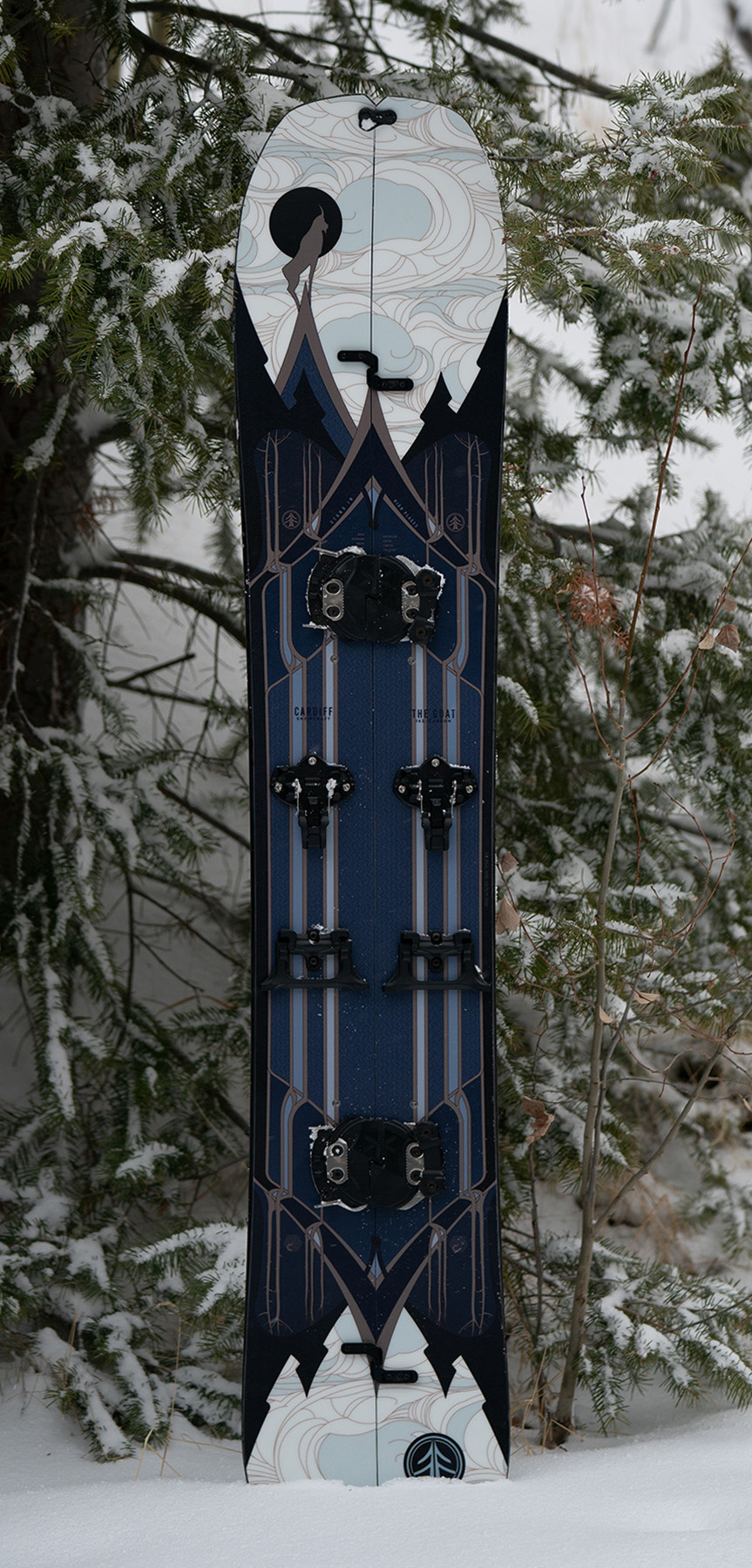
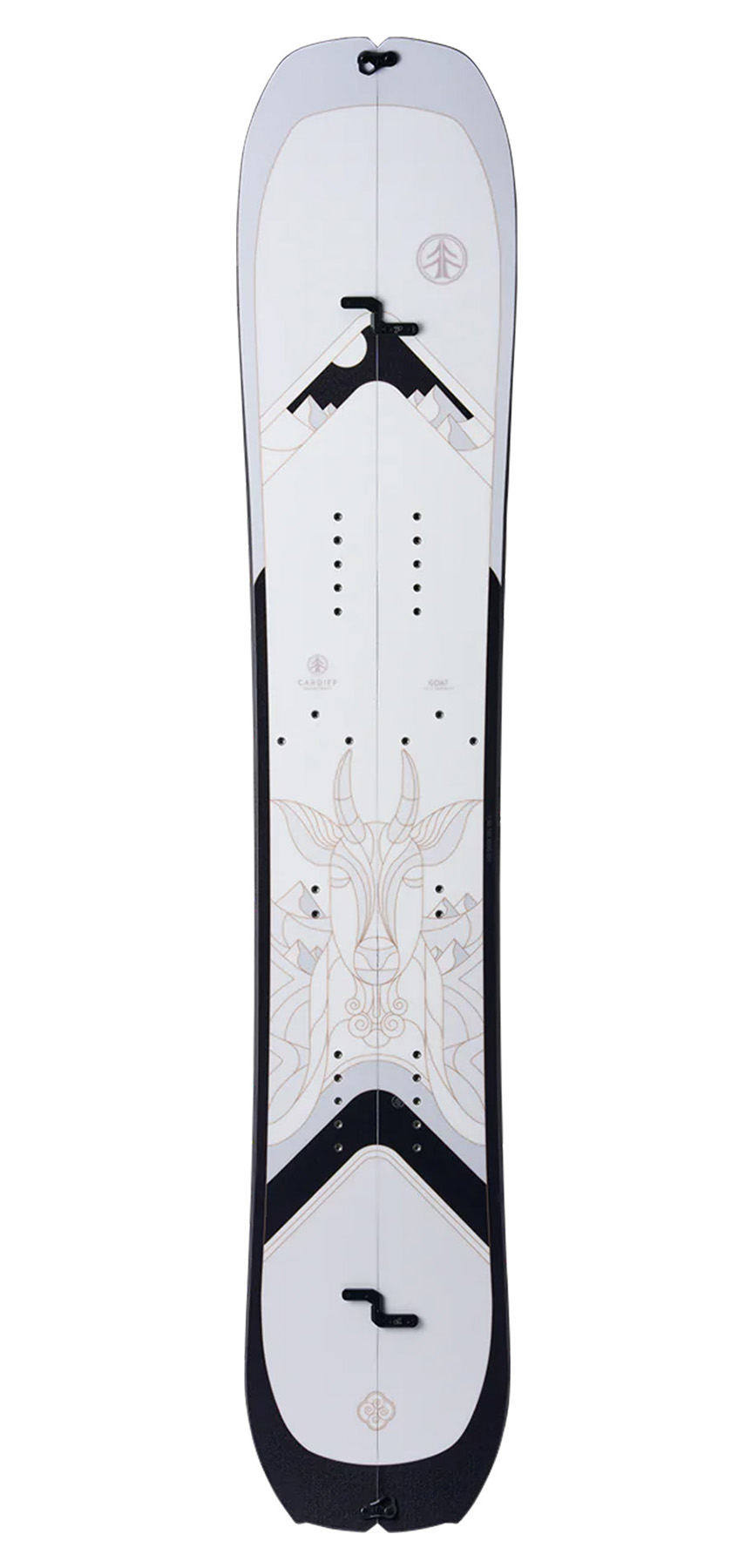
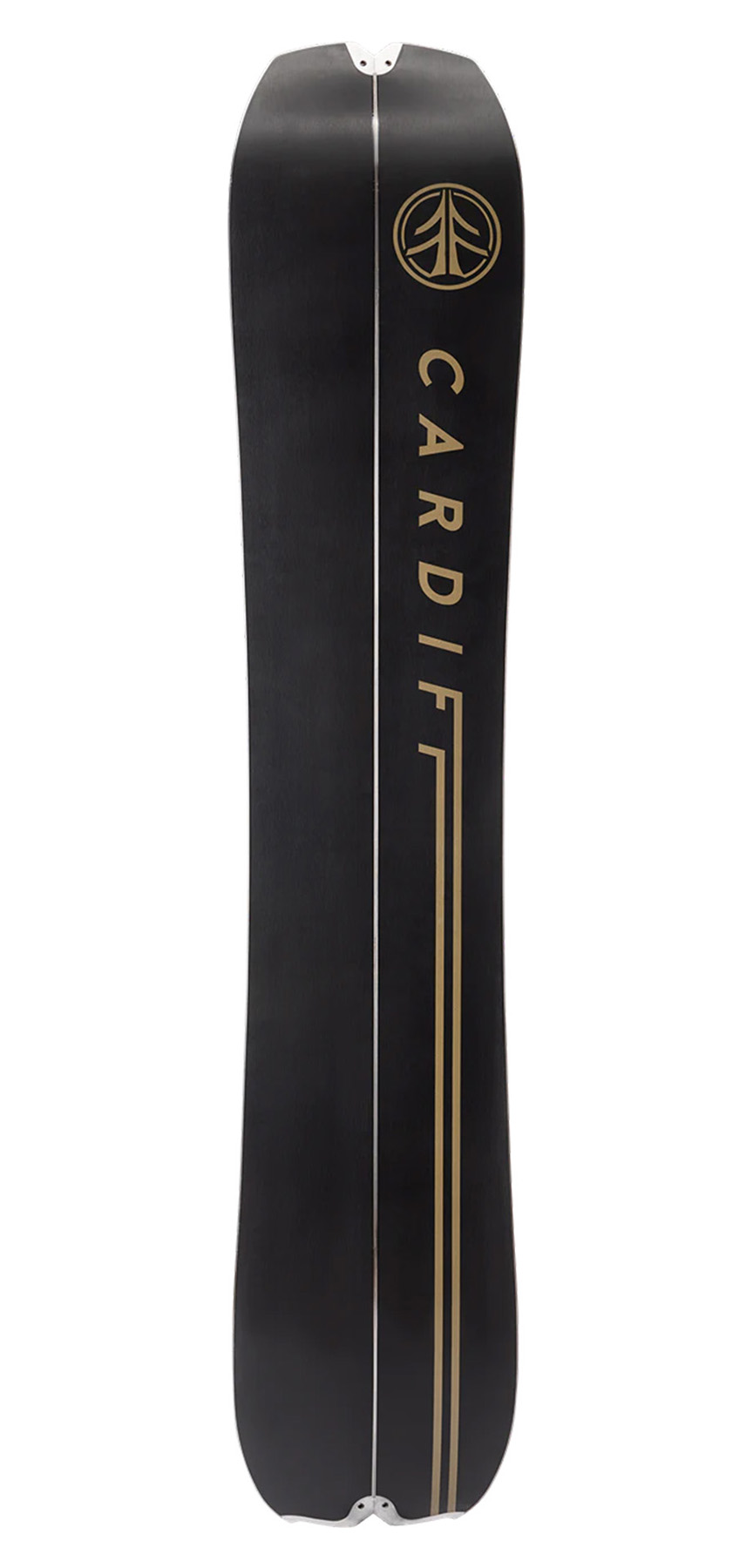
Intro
Founded in 2015, Cardiff Snowcraft quickly made a name for themselves in the snowboard — and especially the splitboard — market. According to Cardiff, all of their boards are designed and tested first as a split. They’ve also expanded into the ski market, with the goal of applying their particular approaches to shaping, rocker / camber, and construction to both boards and skis.
We’ve been testing a few of Cardiff’s splits and skis, starting with the Goat Pro Carbon Splitboard. The Goat is Cardiff’s “big-mountain charger,” and the first Goat was reportedly the “original Cardiff board shape.” We’ve now spent more than a full season on it, but before we dive into on-snow performance, here’s a rundown of the details of its design.
What Cardiff says about the Goat Pro Carbon Splitboard
“The Cardiff Pro Carbon Goat is a hard-charging, big mountain board with freestyle roots, designed to traverse and descend the most rugged terrain. The Pro Carbon build is for the strong rider who’s looking for the lightest, most durable and responsive core on the market. Fresh wax, ready to rip out of the box.
Eight years of testing and refinement, a dozen different iterations, and an untold number of days, mountain ranges, and descents. The Goat—a big-mountain charger that pro rider Bjorn Leines called the best board he’s ever ridden—is the original Cardiff board shape and is now better than ever. Developed and tested as a split, the Goat Enduro is a durable solid that can engage on icy sidehills, make surfy, high-speed turns, and take you down big, intimidating lines worldwide. Original artwork by Kyson Dana, portraying the fearless mountain denizen who inspired this board.”
Construction / Materials
Cardiff offers most of their boards in both an “Enduro” build and a “Pro Carbon” build. While the shapes and rocker profiles are generally the same for the respective model, the Enduro boards are a bit heavier and less expensive ($400 less, in the case of the Goat), whereas the Pro Carbon versions are built with more of a focus on minimizing weight.
For their Goat splitboard, the Pro Carbon version uses a thinner poplar / paulownia wood core, adds titanal metal stringers for improved damping and durability, and finishes things off with two full sheets of carbon fiber. The Enduro version uses a thicker poplar / paulownia wood core, full-length, full-width carbon stringers, and a fiberglass laminate.
All the Cardiff boards and skis feature urethane sidewalls and sintered graphite bases. Cardiff also provides the option to add Phantom Glide base treatment when ordering.
Shape
The Goat is a directional freeride board with a set-back stance. It has a blunt-shaped nose and about 11 mm of taper on the 162 cm length we’re testing. The tail features a cutout shape that should help in terms of working with a variety of skin-clip designs.
The Goat’s shape is not wildly tapered and seems to fit well into the modern big-mountain freeride category. Just looking at it, I suspect / hope that the Goat will offer impressive flotation in pow while also being able to drive through choppy conditions without the hooky feeling that some directional twins can exhibit.
Rocker / Camber Profile
Cardiff calls the Goat’s profile “HALFcamber,” and states that 60% of the board is cambered; the camber is located under the feet, where the core is thickest. The Goat’s core starts to thin past the contact points, in line with where the board’s camber progressively transitions to rocker at the nose and tail.

Due to its directional design, the Goat’s camber is a bit more biased toward the back of the board. However, true to Cardiff’s note about the Goat being a “big mountain board with freestyle roots,” the Goat’s tail rise / splay is still nearly symmetrical, assumingly to allow for switch riding.
Flex Pattern
Hand flexing the Goat (longitudinally) suggests a stiff flex, particularly in the middle / between the binding inserts. Overall, this feels like a very stiff board and I have high hopes for its high-speed stability. The Goat’s tail is stiffer than the nose and, as mentioned above, there’s a significant difference between the flex of its nose / tail and the cambered, thicker, middle portion of the board. So, while it’s quite stiff in the middle, I’m curious how its softer extremities translate in terms of pop.
Torsionally, the Goat Pro Carbon again feels quite stiff, at least in hand. However, it’s tougher to tell this before getting it on snow, and your particular splitboard binding / joining system can also play a big factor there, so we’ll see how that plays out this season.
Sidecut Radius
Cardiff’s boards and skis feature the brand’s “RADiCAL sidecut,” which reportedly blends 7 different radial and progressive sidecut radii. They say that this results in a longer effective radius in the front for better stability when making bigger, front-foot-heavy turns, while the radius tightens through the back to allow for tighter turns when you shift your weight rearward. For reference, Cardiff says the average sidecut radius for the 162 cm Goat is 11 meters.
I’m particularly interested in how the Goat’s sidecut profile, tapered shape, camber profile, and flex pattern all combine on snow, especially in terms of how the board handles the slower-speed technical turning and pivoting.
Weight
Our 162 cm Goat Pro Carbon weighed in at 3.0 kg / 6.61 lbs without additional hardware for bindings (pucks, heel risers, etc.). For reference, the board we have came with Phantom Hercules Clips, which seems to be the norm for Cardiff’s splits.
For reference, here’s how that measured weight compares to the stated weights for several other freeride-oriented splitboards.
2.9 kg Amplid Miligram Split, 162 cm (21/22–23/24)
3.0 kg Cardiff Goat Pro Carbon, 162 cm (23/24–24/25)
3.03 kg Weston Ridgeline Carbon, 162 cm (23/24)
3.2 kg Jones Solution Split, 162 (23/24)
3.4 kg WNDR Alpine Shepherd Tour, 162 cm (23/24)
3.6 kg WNDR Alpine Belletour, 164 cm (23/24)
3.8 kg Voile Skyline Split, 162 cm (22/23–23/24)
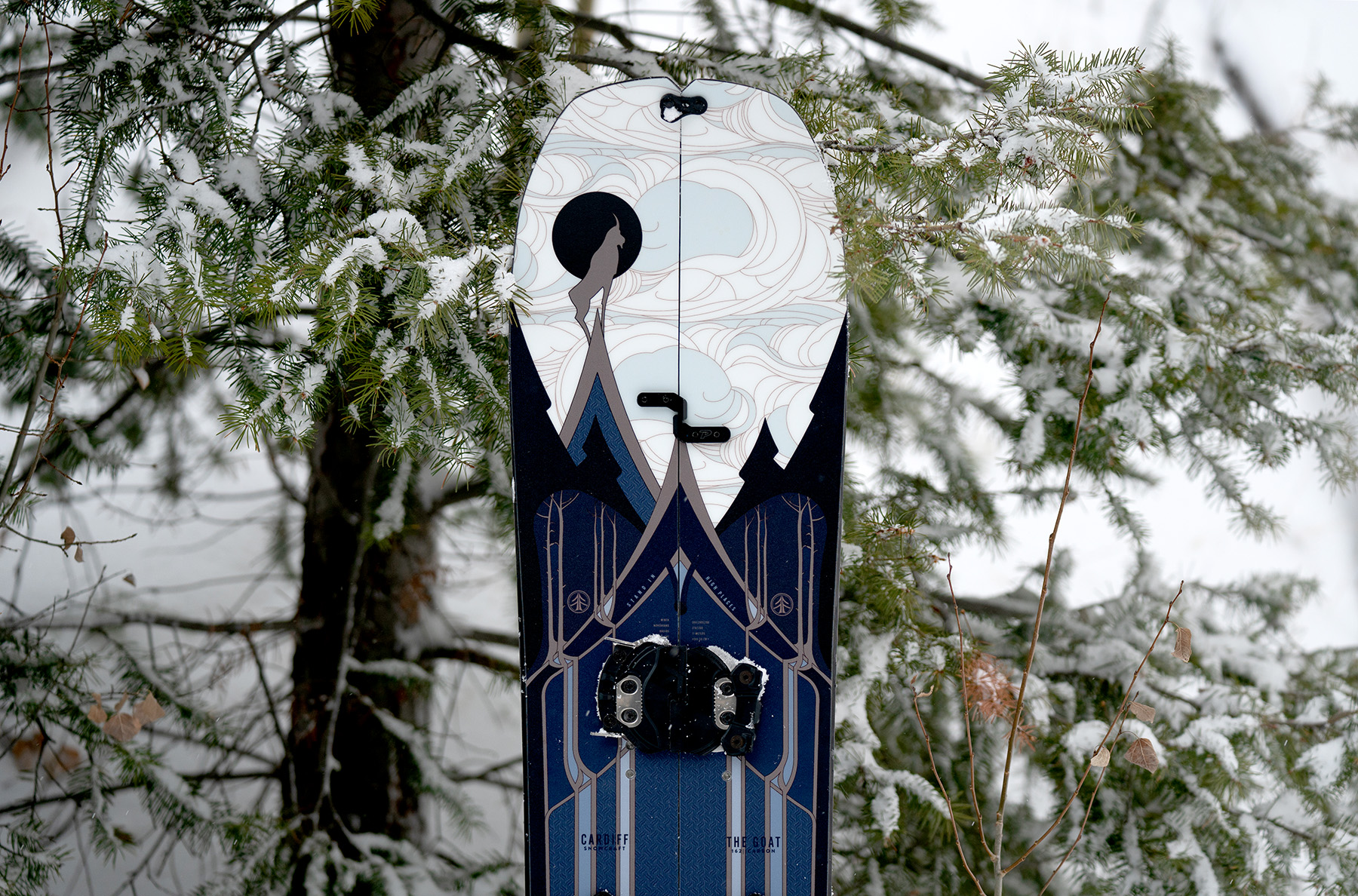
FULL REVIEW
Now that we’ve spent a full season on Cardiff’s Goat Pro Carbon, we’re ready to weigh in on how it’s held up, where it excels, and what sorts of riders ought to consider it.
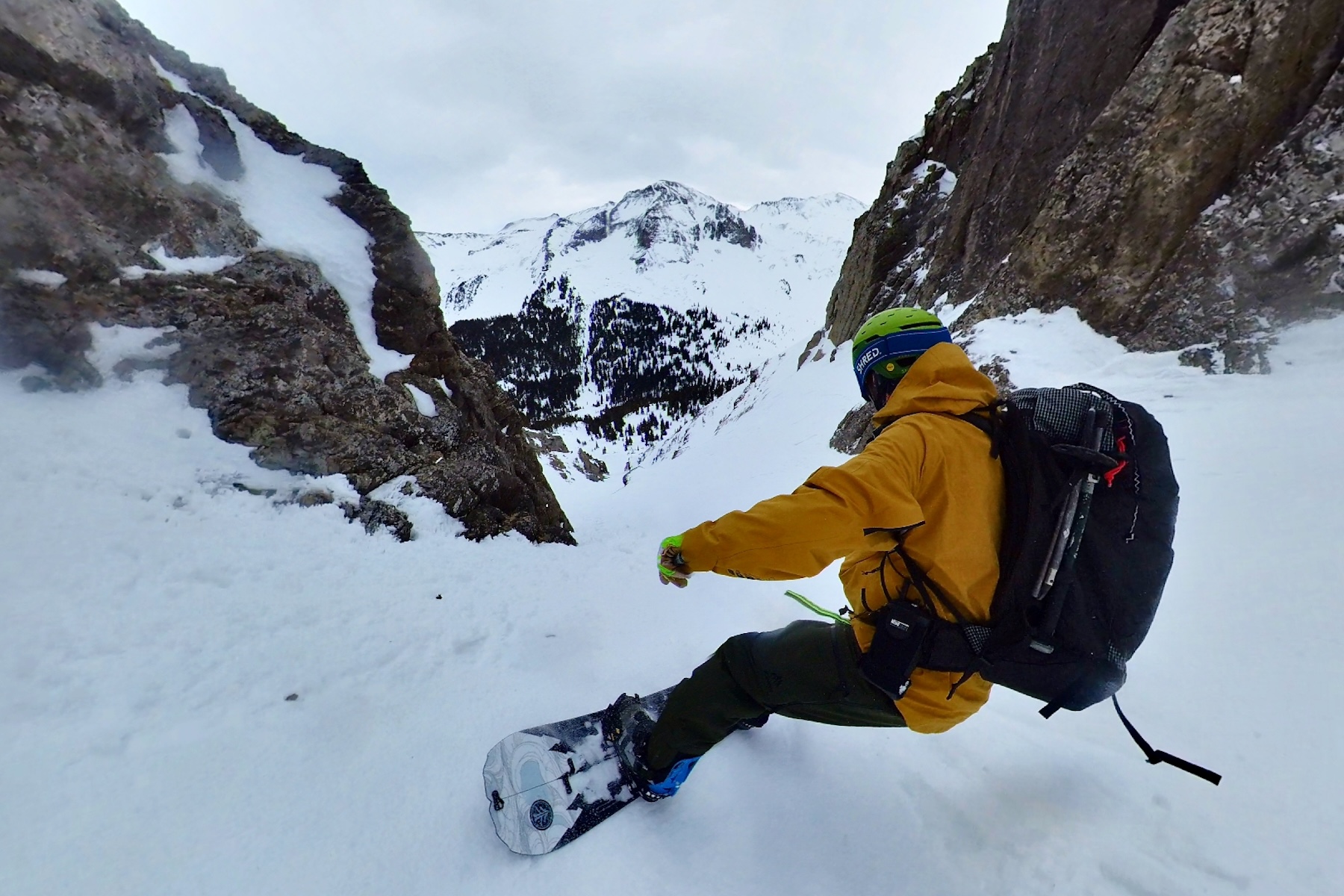
Uphill / Skinning
The Goat Pro Carbon is one of the more enjoyable and efficient boards I’ve toured on. With a set back pocket of camber under the binding’s toe piece, the Goat Pro Carbon offers a broad sweet spot for maintaining skin track grip when heading up the hill. That extra grip underfoot is a boon for efficiency, allowing longer strides and better terrain contouring.
In addition to the Goat’s practical camber profile, its relatively long sidecut radius, stiff flex, and 11 mm of taper seem to result in a stable feel on side hills and while traversing. Especially when paired with hard boots, there’s a lot to appreciate about this board’s lateral rigidity and poise during tricky ascents.
For those occasional but often quite exhilarating “skin skiing” moments, the Goat Pro Carbon’s nose offers just enough rocker to adjust angles quickly without undue edge bite, and its underfoot stiffness seems to keep it solidly in the skin track to help keep things under control.
At 3.0 kg for the sizable 162 cm size we tested, the Goat Pro Carbon isn’t the absolute lightest split we’ve weighed, but it’s definitely on the lighter end of things for its size. I had no issues subjecting it to some big days in the backcountry, and it’s a suitable partner for long hauls.
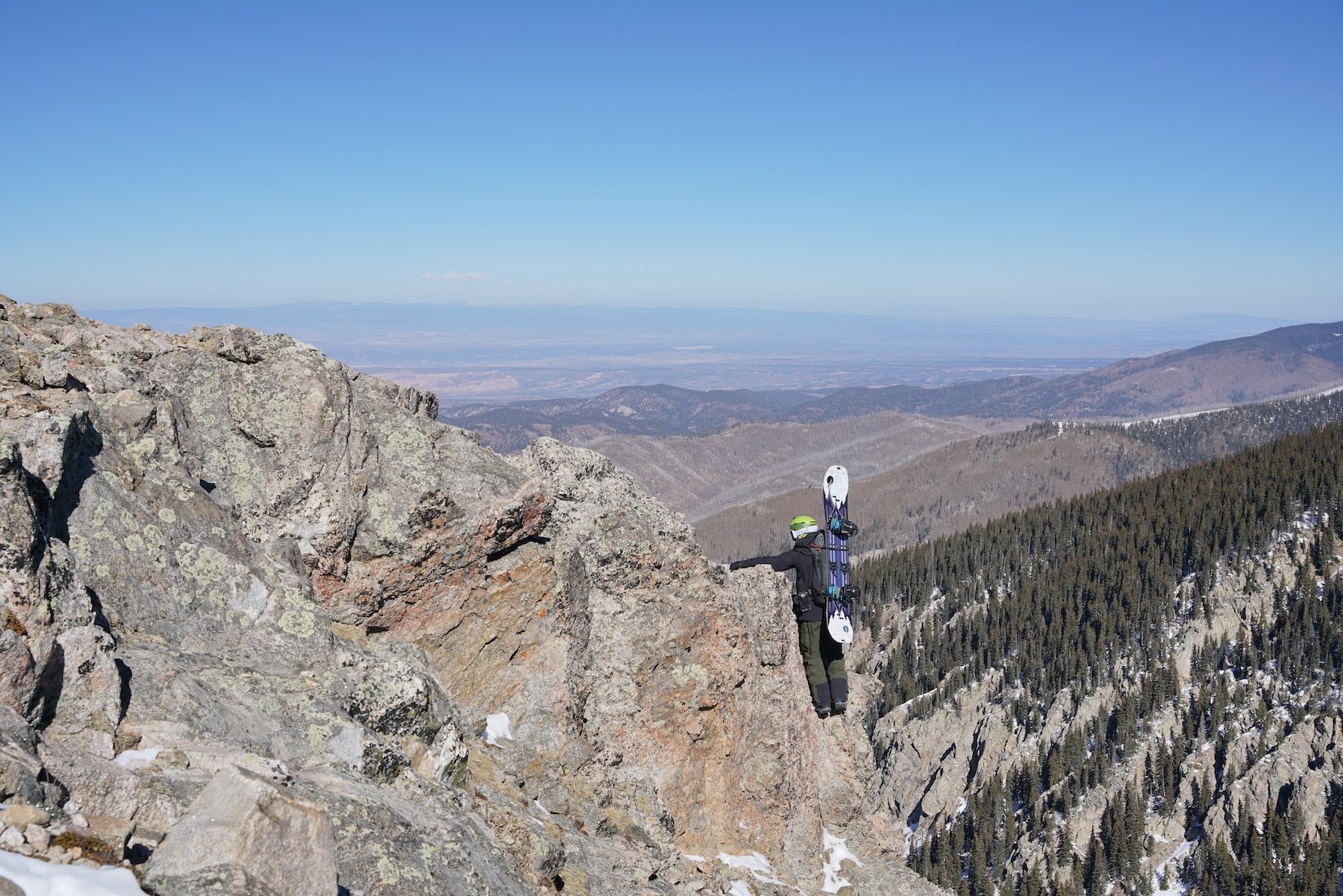
Powder
For a lot of folks, untracked powder is the promise that justifies the climb, and the Goat is a solid pow board for what it is.
Heavily set back and volume-shifted (short and wide) boards have become more prevalent because of their float in deep snow, but the Goat Pro Carbon is more of an all-mountain tool designed for support and speed in the worst conditions. Despite its focus on versatility, it rode really well in powder, provided that speeds were on the higher side.
The Goat doesn’t require speed to perform well and provide lift from the nose, but speed helps it plane and maintain stability. I didn’t notice the nose trying to sink or requiring a ton of effort to keep up in deep snow, likely thanks to the Goat Pro Carbon’s 11 mm of taper, which shifts the volume just enough to balance nose lift with edge hold and control.
Cardiff harps on the Goat Pro Carbon’s big-mountain freestyle intentions, and for playful riders who like riding switch and popping pillows, this board would really excel. I’ll touch on playfulness a bit more below, but despite its stiffness and composure at higher speeds, the Goat Pro Carbon has a ton of pop that can be exploited on features like nearby tracks or windlips. And, unlike many of the more maneuverable pow-oriented boards out there, the Goat provides a big landing platform with a supportive tail.
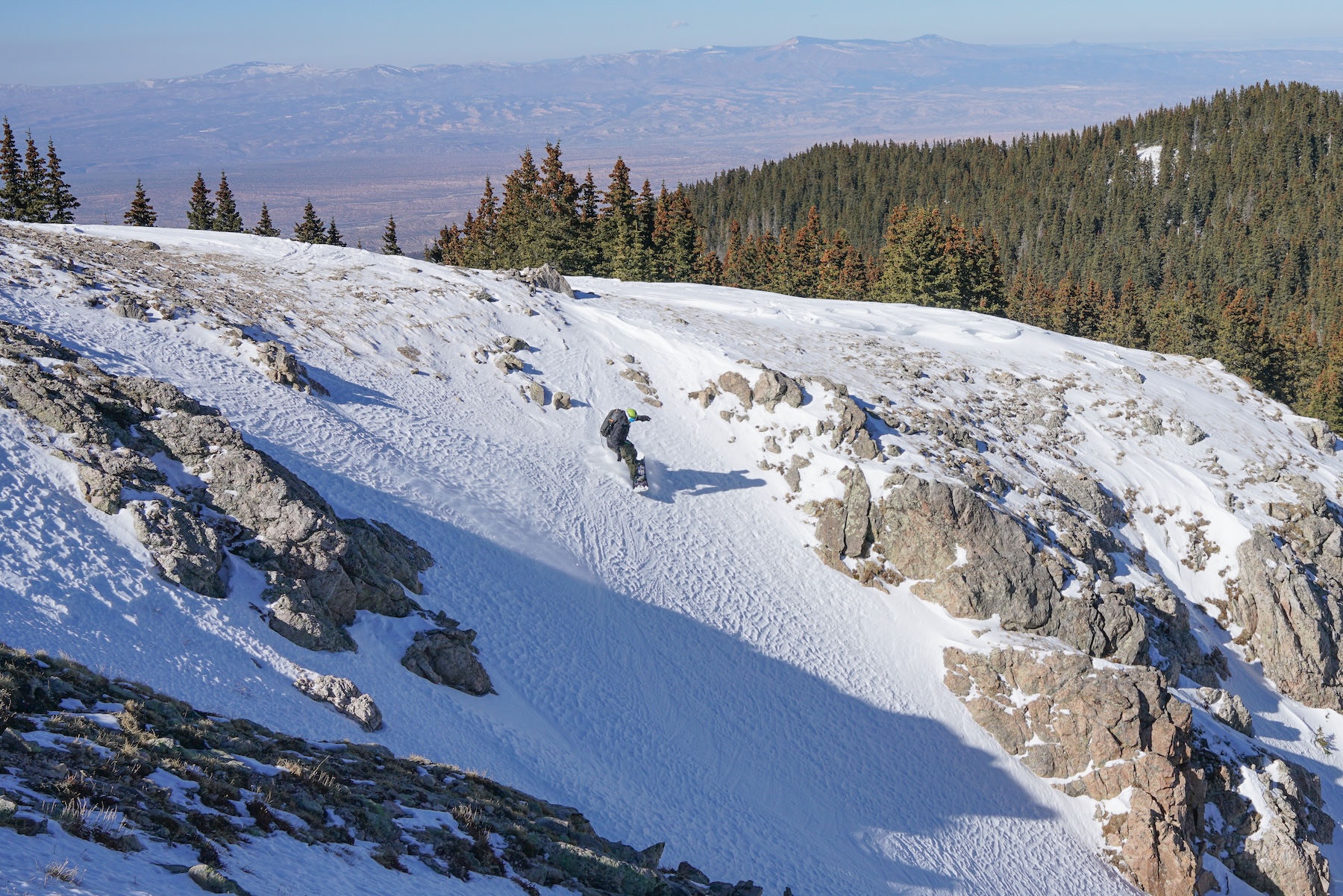
Firm, Smooth Snow
Cardiff’s top-level construction used on the Goat Pro Carbon contains a few things that usually result in great edge hold and precision. Carbon laminates, camber, and a relatively stiff flex all tend to help cultivate a confidence-inspiring ride in firmer conditions, and that seems to hold true with this board.
Maintaining solid edge hold on traverses is key when in consequential terrain, and I felt that the Goat Pro Carbon’s torsional stiffness from nose to tail was well balanced to keep the edge engaged in critical situations. Its edge hold is comparable to some of my recent favorite boards for these conditions, such as the Voile Skyline and Jones Solution. Especially in the backcountry, predictability and trust are invaluable.
Early in April 2024, I visited the northern San Juan mountains in Colorado, which have plenty of consequential terrain (and often variable conditions in the spring). With the Goat Pro Carbon, I was able to safely tick off a line in very firm conditions, and I was very appreciative of the board’s reliable grip and composure in that environment.
The tradeoff here is that the Goat Pro Carbon’s construction isn’t the best at managing vibration — but that’s fairly common for other carbon-heavy boards we’ve tried. It’s not so much that the Goat Pro Carbon feels overly harsh or anything like that. Just know that, with the Goat Pro Carbon, you lose some damping / suspension in exchange for its precision. I suspect the “Enduro” version of this board might offer better vibration damping, but it also weighs a good bit more than the Pro Carbon model.
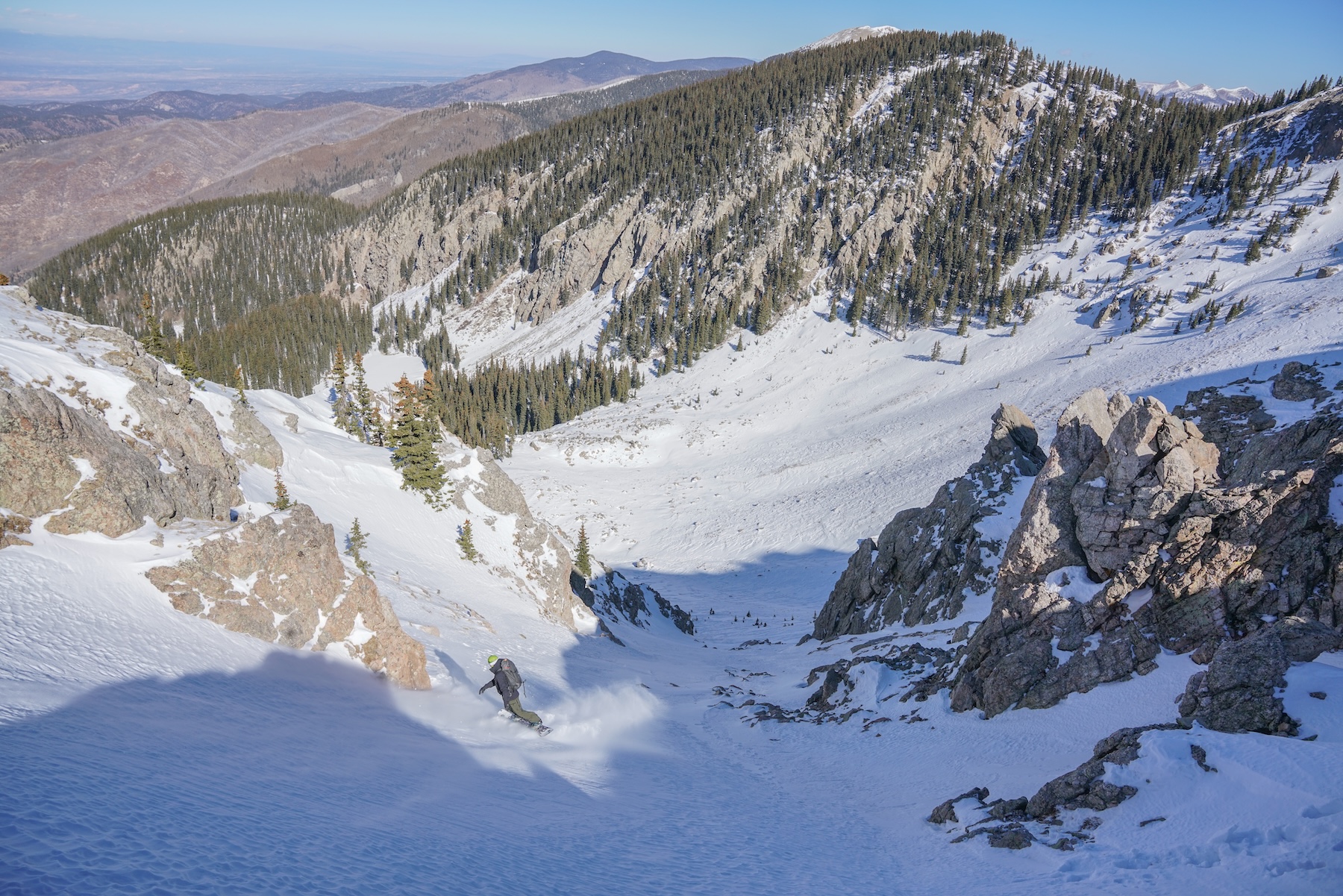
Trees & Tight Terrain
Especially in tighter terrain and trees, I’ve often found that a board’s responsiveness seems to be closely linked to the firmness of the snow. Some of the super whippy boards with short tails allow for really tight turns in deep snow but don’t turn well in firm snow and can wash out.
The Goat Pro Carbon’s longer tail does not sink as easily in soft snow, making it less ideal for slashing through the tightest zones on a pow day, but it does allow you to weight the nose more easily in hard snow, allowing for quick turns in those conditions. Pivoting tight turns on the Goat Pro Carbon did not pose any issues, and overall, I’d place it on the more responsive end of the spectrum when dealing with conditions that aren’t super deep.
Playfulness
Cardiff designed the Goat Pro Carbon with an ‘all-mountain freestyle spirit,’ and they’ve certainly accomplished that. The result is a splitboard that can handle challenging conditions with confidence and control while also integrating traits more often found on freestyle resort boards — pop being one of the most notable.
There’s some debate regarding camber and how much it actually impacts a board’s pop / energy / rebound, but I’m still in the camp of ‘camber means pop,’ and there’s plenty of it here.
As a concept, ‘playfulness’ is somewhat nebulous, given that people tend to ‘play’ differently in different circumstances. To me, the Goat Pro Carbon’s brand of playfulness is defined by side hit spins, drops, kickers, and other “in the air” approaches that are generally done at higher speeds or with some force. Because it’s so stiff, buttering isn’t very easy and will depend on snow conditions and the level of commitment from the rider. That flex pattern can also mean that accessing the board’s inherent pop can require some effort, especially at lower speeds.
So, is the Goat Pro Carbon playful? If that means trying drops and tricks on a splitboard as if it were a solid board or trying to spin off bigger features, then yes. However, it’s far from an ultra-surfy or buttery park board — the Goat Pro Carbon rewards more input with more output.
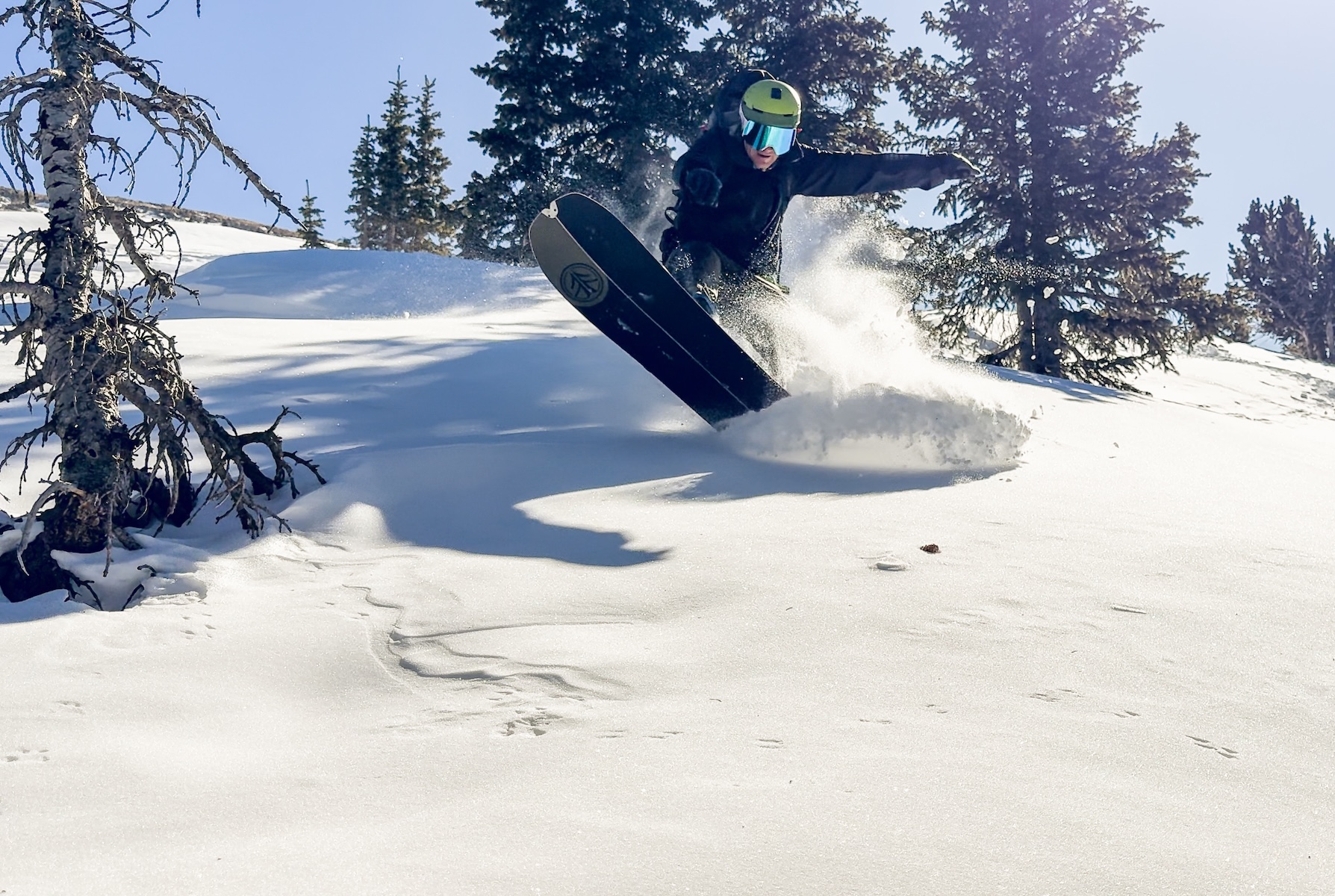
Durability
The Cardiff Goat Pro Carbon is a premium-level board, and as one might hope when shelling out its $1350 asking price, it has held up admirably.
The Phantom tip / tail clips and joining hooks can be fine tuned to have a tight fit at the seams, and all have proven quite durable throughout the test period. The topsheet has held up well, too, with no chipping or flaking, even after spending lots of time in roof boxes banging around with other equipment.
Though not intentionally, I put this board’s base durability to the test while returning from a hut trip in the San Juans. This particular ski out required traveling down a road, which had fine gravel under two inches of snow. Considering the amount of base grinding that occurred, the base held up quite well, with no intrusions requiring base fill.
Comparisons
Jones Solution Split
The Jones Solution Split is generally designed for similar use cases as the Goat Pro Carbon, and I’ve come to enjoy both — but for slightly different reasons.
Both offer shapes built for big mountain lines, provide confident edge hold in bad conditions, and still allow for some level of playfulness.
Compared to the Goat Pro Carbon, the nose on the Solution is quite a bit softer, which often resulted in the feeling of it folding into the slope in certain conditions. This was mainly felt in breakable crusts, where the stiffer Goat Pro Carbon seemed less likely to dive.
With its subtly serrated edges, the Solution Split has one of the best and tightest seams of any splitboard I’ve come across; this helps to close the gap between the two boards when it comes to torsional rigidity. In most conditions, the two boards feel very similar overall, but in the harshest and hardest of snow, I would prefer the added precision and stability of the Goat Pro Carbon, even though the Solution feels a bit more damp / less chattery. The Ultralight version of the Solution Split might be an even better comparison to the Goat Pro Carbon, but we haven’t yet tested that particular model.
WNDR Alpine Shepherd Tour
The Shepherd Tour is a more tapered and directional design than the Goat Pro Carbon, with the Shepherd having more of its volume shifted toward the nose. Despite looking quite different, both are designed with big, technical lines in mind.
Overall, the Shepherd Tour is more maneuverable, especially in soft snow, but where they overlap is in their edge hold on steep lines in bad snow. Both provide ample stiffness and precision, resulting in confidence in subpar snow and chop. The Goat Pro Carbon offers more pop and freestyle inspiration, and it’s about 400 grams lighter in a 162 cm length. On the other hand, the Shepherd still holds the title for being the most damp splitboard I’ve been on to date, and it feels more agile in tight spots.
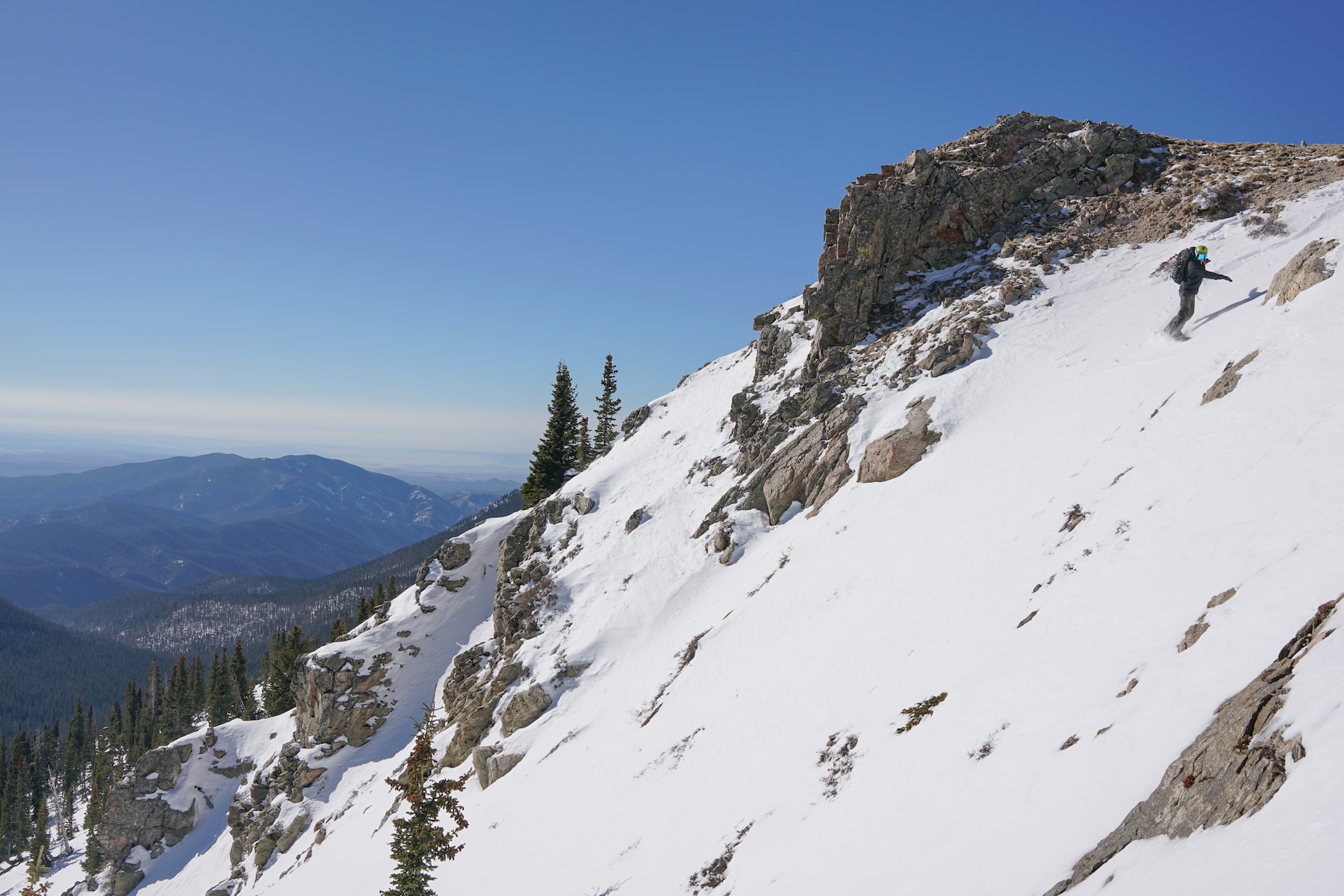
Who’s It For?
Whether you’re a backcountry veteran looking to ride technical lines in tough snow conditions or a new splitboarder looking for a dependable partner in all conditions, the Goat Pro Carbon warrants consideration.
I consider this an advanced-level board that responds best to more aggressive riders who can take advantage of its stiff flex. Despite feeling a little more chattery than some softer and/or heavier boards, its stable and precise ride can make the difference between staying on a line or sliding to the bottom. It’s still plenty of fun in good snow, especially with some speed or things to jump off, but its composure and edge hold are what set it apart from many other splits.
The Goat Pro Carbon’s uphill performance will please efficiency-minded riders, too. Even as a soft-boot rider, I very much appreciated its low weight and solid edge hold while side-hilling and traversing — the hard-boot community may find even more to like here.
The Goat Pro Carbon’s premium construction comes at a price ($1350), but that’s on par with other high-end splits. The Goat Pro Carbon’s outstanding durability (after my first full season on it) goes a long way toward justifying that sort of price tag, as does the low weight of its carbon-laden build. However, if you’re less worried about weight or stiffness, Cardiff offers the same shape in their slightly heavier and softer “Enduro” construction for $750.
Bottom Line
Most splitboard adventures involve widely variable conditions. You’ll encounter all sorts of different aspects, elevations, terrain, and weather, and they can significantly change the dynamics of the day.
With the Goat Pro Carbon, Cardiff has essentially produced a “1-split quiver” that is plenty fun when the snow is good, but it truly sets itself apart when handling challenging conditions on anything from frozen traverses to steep wind slabs above exposure. Despite that, it’s a board that also manages to have a playful, freestyle-inspired feel — at least when piloted by a fairly aggressive rider. It’s not the most damp in chattery conditions nor ultra-maneuverable in tight trees, but the Goat Pro Carbon manages to provide reliable confidence in pretty much any scenario. It’s excellent for the right riders.


What news from the front on the carbon?? I’m looking at the powgoda pro carbon. Mainly want to know if the dampness disappears and vibration is sent to the foot like on many carbon boards.